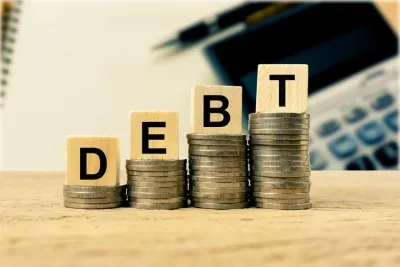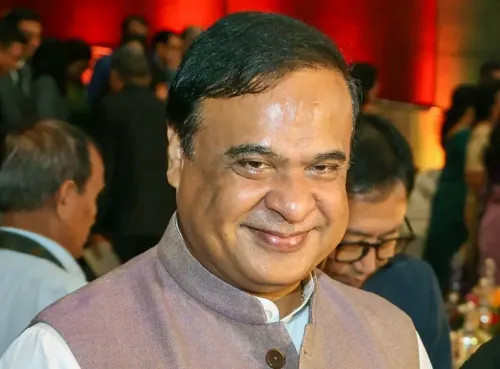Has Government Debt Been Declining Post-Covid-19? Sitharaman Explains

Synopsis
Key Takeaways
- Government debt has decreased significantly since the pandemic.
- Fiscal deficit targets are being aligned for further reductions.
- The Indian economy is projected to grow at 6.5% in 2024-25.
- Exports reached a record high of $824.96 billion in 2024-25.
- Key schemes are in place to support vulnerable populations.
New Delhi, Aug 18 (NationPress) Finance Minister Nirmala Sitharaman informed Parliament on Monday that the government has successfully lowered its debt burden over the past five years, and fiscal deficit targets are being refined to facilitate further reductions in the upcoming years.
As per the Finance Minister's statement in a written reply to a Lok Sabha inquiry, the government has continuously diminished its debt from 61.4 percent of GDP in 2020-21, following the Covid-19 pandemic, to 56.1 percent of GDP in the Budget Estimate for 2025-26.
She noted, “The government is focused on maintaining a trajectory for fiscal deficit such that Central government debt steadily decreases, aiming for a debt to GDP ratio of approximately 50 (plus/minus 1) percent by March 31, 2031.”
The government's outstanding debt is provisionally estimated at Rs 185.94 lakh crore by the end of FY 2024-25. Of this total, internal debt constitutes Rs 157.11 lakh crore, external debt includes Rs 8.74 lakh crore, and the remaining Rs 20.09 lakh crore consists of other public account liabilities, as stated by Sitharaman.
In response to another Lok Sabha query, she remarked, “In the face of unprecedented geopolitical instability, supply chain disruptions, and a weak global growth forecast, the Indian economy has shown remarkable resilience, supported by careful macroeconomic management, effective fiscal consolidation, strong external sector performance, and ongoing structural reforms. India continues to be the fastest-growing major economy, achieving a real GDP growth of 6.5 percent in 2024-25.”
The Union government’s fiscal deficit has decreased from 9.2 percent of GDP in 2020-21 to 4.8 percent of GDP in 2024-25, with a budgeted further reduction to 4.4 percent of GDP in 2025-26. The average retail inflation rate, as indicated by the Consumer Price Index, was 4.6 percent in 2024-25, marking the lowest level in six years, and further declining to 2.4 percent between April and July 2025.
Despite a downturn in global trade, India’s export performance has remained robust, with overall exports reaching an unprecedented $824.96 billion in 2024-25. This upward trend has persisted into the current fiscal year, showcasing a 5.46 percent growth in overall exports during the first quarter.
Additionally, India’s foreign exchange reserves now cover over 11 months of goods imports. This consistent macroeconomic performance highlights the Indian economy's capacity to effectively manage global and economic uncertainties, as observed by Sitharaman.
She also emphasized that the government has implemented targeted measures to safeguard vulnerable segments of society from the adverse impacts of economic fluctuations, while maintaining the momentum of broad-based and inclusive economic growth. Key initiatives such as the Pradhan Mantri Garib Kalyan Anna Yojana, Pradhan Mantri Kisan Samman Nidhi (PM-KISAN), Mahatma Gandhi National Rural Employment Guarantee Scheme (MGNREGS), Pradhan Mantri Awas Yojana (PMAY), Deen Dayal Upadhyaya Grameen Kaushalya Yojana, Stand Up India Scheme, and Deendayal Antyodaya Yojana-National Rural Livelihoods Mission are being executed to ensure essential access, enhance livelihood opportunities, and elevate the quality of life for vulnerable populations.










